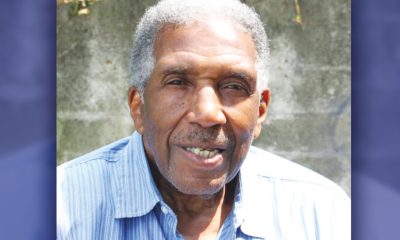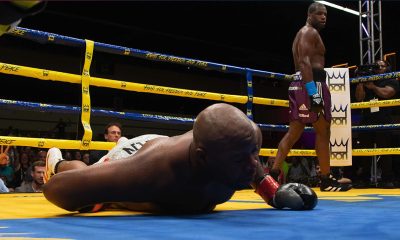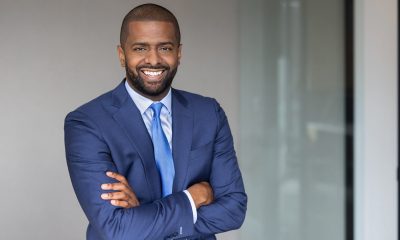Sports
Buster Douglas: ‘Belief’ Led Him to Stunning Upset of Tyson

In this Feb. 11, 1990, file photo, heavyweight boxer James “Buster” Douglas waves his gloved hand to the cheering crowd as he makes his way to the dressing room following a 10th round knockout victory over Mike Tyson in a scheduled 12-round championship bout at the Tokyo Dome. Others are unidentified. It’s been 25 years since one of the most stunning upsets in sports history. (AP Photo/Sadayuki Mikami, File)
RUSTY MILLER, AP Sports Writer
COLUMBUS, Ohio (AP) — An uppercut and three follow-up punches made James “Buster” Douglas a household name. And 25 years later, the brief heavyweight champion is still pleased his knockout of Mike Tyson ranks among the biggest upsets in sports.
“Being crowned champion was a dream for me,” Douglas said of his Feb. 11, 1990 upset. “To achieve that was the ultimate. It was awesome.”
A promising if enigmatic fighter, Douglas was given almost no chance of hanging around long with the undefeated heavyweight champion in their title fight in Tokyo. The bout was considered a tuneup for Tyson before an anticipated match with rising star Evander Holyfield.
In fact, the day before Tyson fought Douglas, promoter Don King called a news conference to discuss the dates and terms of that showdown. Douglas took note.
Douglas was a terrific athlete — he played small-college basketball — but was considered less than committed to boxing despite a 29-4-1 record as a professional. The son of club fighter Bill “Dynamite” Douglas, he had shown glimpses of promise but had also displayed a lack of heart and discipline at other times.
But roughly three weeks before the opening bell with Tyson, the person who believed in him the most, his mother, Lula Pearl, died.
Reminded this week that no one had thought he had a chance against Tyson, Douglas hesitated before saying: “Yeah, but she did.”
Tyson was boxing’s hope and its bane, a street tough who stepped into the ring in simple black trunks, black shoes and a sheared-off T-shirt. His temperament was erratic, at best. He could be emotional when he spoke of his late mentor and friend, Cus D’Amato, or he could also be raw, brutal and crude.
In the ring, he was a force of nature, always striding closer, always hurling punches, never yielding.
He was 37-0 with 33 knockouts heading into the fight. Las Vegas oddsmakers made him a 42-1 favorite to do his wrecking-ball thing against Douglas.
They weren’t alone. Ed Schuyler, a boxing writer for The Associated Press, was stopped at customs on his way into Japan. The customs officer asked Schuyler how long he would be working in Japan.
“About 90 seconds,” Schuyler deadpanned.
Just before the opening bell, someone in the crowd shouted to Douglas to win it for his mother.
The 6-foot-4 Douglas, with J.D. McCauley, his trainer and uncle, along with manager John Johnson in his corner, came out inspired. He held his own in the early rounds, holding off the shorter Tyson’s charge with his left jab.
Late in the eighth round, Douglas went down.
“I was kind of, like, admiring my work: Looking at him, taking my time to look at everything that was going on and paying more attention to how he was reacting to the punches instead of continuing to fight,” Douglas recalled. “He ended up catching me with a good shot. When I got up off the ground, I knew I had to get back on focus, on point, with what I was doing.”
King and Tyson would later claim that Douglas didn’t get up in the mandatory 10 seconds as the round came to an end. But by the official’s count, he was standing and in control of his faculties at the count of 8.
“I knew where I was the whole time,” he said. “I could have got up at six, but I had a couple of seconds and I took my time.”
After the fighters returned to their corners, Douglas dominated the ninth. Then in the 10th, he rocked the world.
“I finished him up with a combination,” Douglas said. “I hit him with four terrific shots. He wasn’t able to get up.”
King, seeing a gigantic payday floating away, appealed the outcome but, days later, all of the major organizations recognized Douglas as the champion.
“This makes Cinderella look like a sad story, what Buster Douglas has done here tonight,” HBO boxing analyst Larry Merchant said after the fight.
Through a spokesman, Tyson declined to speak with The Associated Press about the fight.
The two boxers have met each other only once since.
“We only crossed paths once, and that was a few years back down in Cincinnati,” Douglas said. “There wasn’t much conversation. It’s not like we sat down and talked about it and (became) friends, anything like that. He was still kind of short (with me). So I didn’t push it any further.”
Tyson’s life, in and out of the ring, has grabbed headlines for years. Meanwhile, Douglas is content to live a quiet life in a large home near a farming village 25 miles from his hometown of Columbus.
He quickly lost the heavyweight title to Holyfield in October 1990 in Las Vegas. His cut of his lone defense, estimated at $7 million after taxes, set him up for a comfortable existence.
Douglas is past struggles with weight and blood sugar, saying he now “could go a few rounds” at the age of 54.
He has thrown himself into raising his four sons with his wife, Bertha. He spends five days a week coaching young boxers at a local rec center and prides himself on how well they’re doing.
All these years later, he says it was no fluke.
“When I was itty-bitty and I first put on a pair of gloves when I was 10 years old, that was the beginning,” he said. “I just felt I could do anything. It was just a belief. I believed in myself and that I had the ability to do that. It’s something that my mother instilled in me at a very young age: You can do whatever you want.”
___
Rusty Miller can be reached at http://twitter.com/RustyMillerAP
Copyright 2015 The Associated Press. All rights reserved. This material may not be published, broadcast, rewritten or redistributed.
Activism
McClymonds High Names School Gym for Star Graduate, Basketball Legend Bill Russell
William “Bill” Felton Russell was born on Feb. 12, 1934, and died on July 31, 2022. He achieved fame as a U.S. professional basketball player who played center for the Boston Celtics of the National Basketball Association (NBA) from 1956 to 1969. He was the centerpiece of the Celtics dynasty that won 11 NBA championships during his 13-year career.
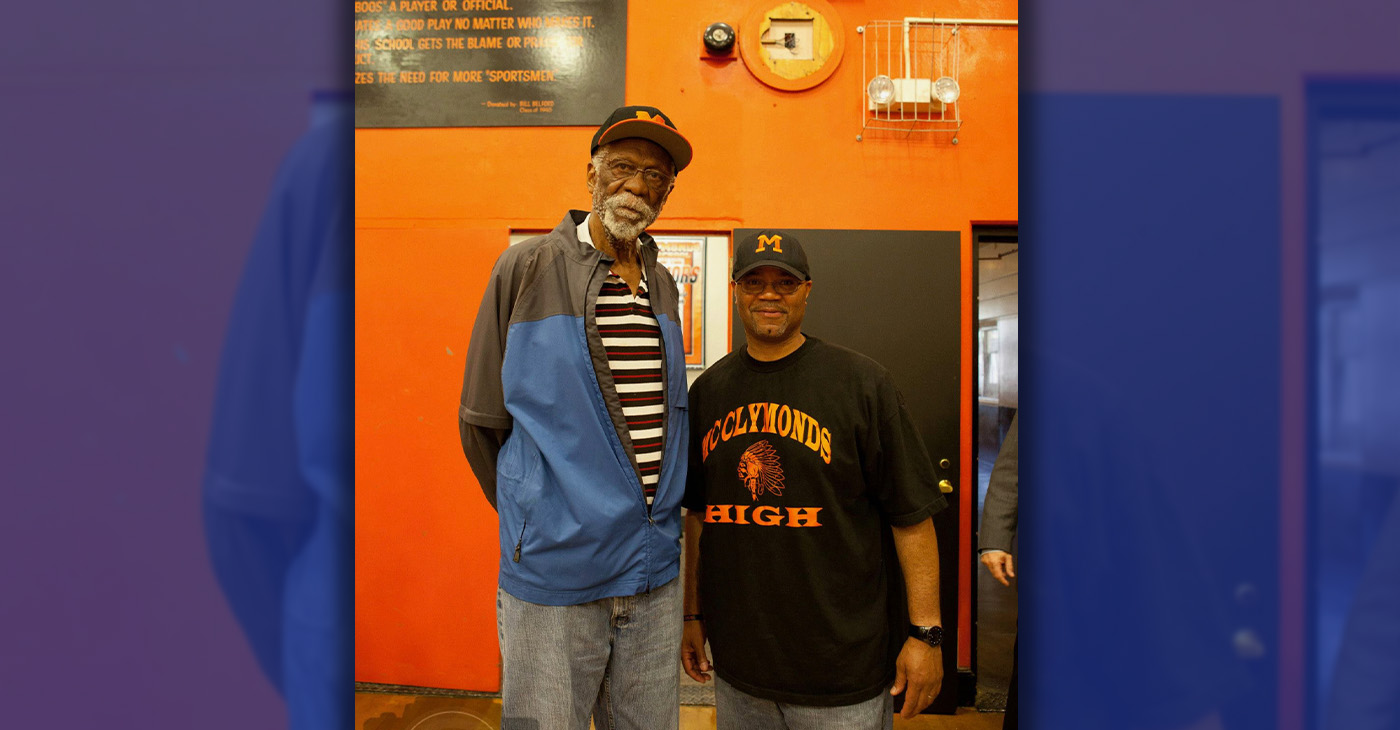
By Ken Epstein
West Oakland’s McClymonds High School, “the School of Champions,” this week named the school’s gymnasium in honor of one of its most famous graduates, basketball legend Bill Russell (class of ’52).
William “Bill” Felton Russell was born on Feb. 12, 1934, and died on July 31, 2022. He achieved fame as a U.S. professional basketball player who played center for the Boston Celtics of the National Basketball Association (NBA) from 1956 to 1969. He was the centerpiece of the Celtics dynasty that won 11 NBA championships during his 13-year career.
Russell is widely known as one of the greatest basketball players of all time. In 2011, he received the Presidential Medal of Freedom, the country’s highest civil honor, from President Barack Obama for Russell’s contributions to basketball and the Civil Rights Movement.
The McClymonds’ naming ceremony was held on Wednesday, the same day as Russell’s birthday. Oakland leader Bill Patterson, a longtime friend of Russell’s, was scheduled to cut the ribbon at the reopening of the gym, which had been closed for several months for renovation. Russell’s daughter Karen was scheduled to attend the ribbon cutting.
Russell’s name and signature are now printed on the gymnasium floor.
Patterson was working at DeFremery Park when he met Russell. “I befriended him as a boy and during his years at University of San Francisco” said Patterson. “We stayed friends for the rest of his life.”
Said McClymonds Principal Darielle Davis, herself a McClymonds graduate, “We are excited to honor Bill Russell for his sports accolades and because he broke color barriers. He is part of our legacy, and legacy is really important at McClymonds.”
Brian McGhee, community schools manager at McClymonds and former football player at UC Berkeley, said that Russell meant a lot to him and others at the school. “He was a beacon of light and hope for West Oakland,” he said. “He did a lot for sports and for civil rights.”
Starting in 2018, Ben “Coach” Tapscott worked with Patterson and other McClymonds grads, community members, and former coaches to encourage the Oakland Board of Education to endorse the naming of the school gym, which finally happened recently.
“We worked hard to make this happen,” said Tapscott. “He’s an important part of McClymond’s history, along with a lot of other famous graduates,” he said.
Activism
OPINION: Politics, Football and Identity in Trump’s America
If you haven’t noticed, all Americans are engaged in an even bigger game that means so much more than the Super Bowl. Our democracy is falling apart.
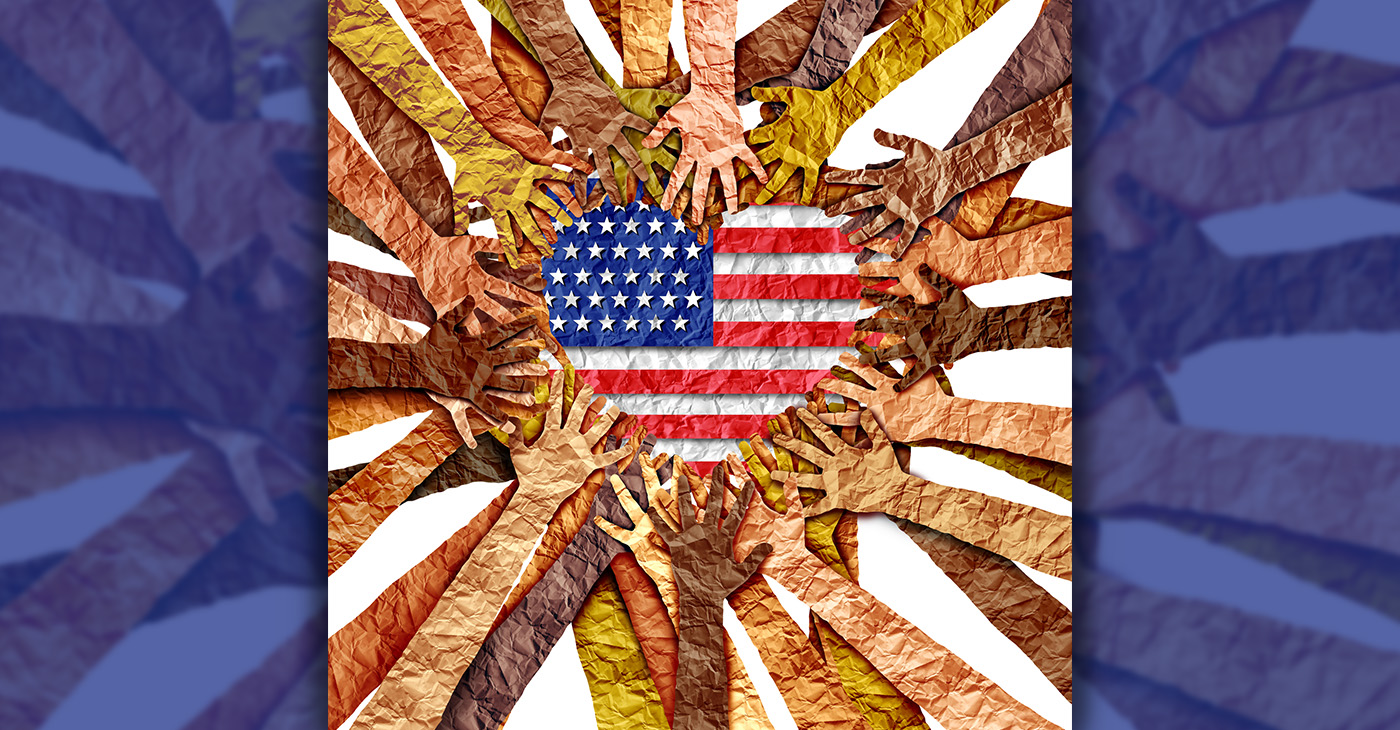
By Emil Guillermo
Two Filipino American stories made headlines recently.
First, Nikko Remigio, the Filipino and African American kick returner for the Kansas City Chiefs, did not win Super Bowl LIX.
The other, Alameda’s Rob Bonta said no to running for governor. I don’t blame him. It’s not like a mass of people wanted him to run.
But I did.
Whenever there is a Filipino American in a place you don’t expect, I’m rooting for that person.
As California’s Attorney General, Bonta is probably the most active defender among Blue States pushing back against Trump’s Extreme-Right agenda.
I’d like to Bonta run for California’s top job, but he’s better off waiting in line. The Democrats need a spot for Kamala Harris, and Bonta not running obliges the hierarchy.
History can wait. Bonta’s just 52.
Harris has held off speculation of her next move, saying she just moved back to the state. But it seems governor is the path for her.
For now, Bonta needs to continue taking the fight to Trump in the courts.
Football and Identity Politics
My dad, whose birthday would have been Super Bowl weekend, came to the US in 1928 as a colonized Filipino, an “American National,” where he couldn’t be a citizen, vote, own property or even marry the person he wanted.
Not if they were White.
Still, he believed in America. He never gave up.
Sort of like Nikko Remigio.
My dad would have loved Nikko.
If you haven’t noticed, all Americans are engaged in an even bigger game that means so much more than the Super Bowl. Our democracy is falling apart.
You want to get passionate about Eagles and Chiefs?
Let’s be passionate about our Founding Fathers, too.
Nikko didn’t change the game. He touched it three times and provided more yards than all of KC’s running backs.
That’s all I needed to see.
He’s our Filipino guy.
Detractors may call it “identity politics.”
People don’t seem to understand the fight for visibility. To be recognized. To be seen. It’s all wrapped up in the big idea of Civil Rights.
I was nowhere near as good as Nikko when I played. But when you are blessed to play football, you play your hardest.
For me, that was when I was 12 and 13 playing Pop Warner football in San Francisco. I was MVP for my team as a running back.
But I was ashamed of my dad. He wasn’t like the other dads. And I remember going to the team banquet to retrieve my trophy alone.
I didn’t realize it probably meant more to him than I thought.
I wish I had shared my MVP moment with him like Nikko shared his joy with his dad, Mark, born in Seattle to two Filipino immigrants, and his mom, whose mixture of Black and White made Nikko the picture of diversity.
Filipino American and Black and White at the Super Bowl.
But don’t forget, there is one game bigger.
The Super Bowl for Democracy. We’re battling for it every day Trump pushes a cockamamie idea that shakes the foundation of our Democracy.
About the Author
Emil Guillermo is an award-winning journalist and commentator. Watch his micro-talk show “Emil Amok’s Takeout/What Does an Asian American Think?” on www.YouTube.com/emilamok1 Or join him on http://www.patreon.com/emilamok
Bay Area
Tina Thompson: Champion, Legend, and Pioneer of Women’s Basketball
Known for her signature red lipstick, Thompson displayed confidence and style on the court, becoming an icon both for her gameplay and her individuality. Her ability to score from anywhere on the floor, combined with her defensive prowess, made her one of the league’s most formidable players.
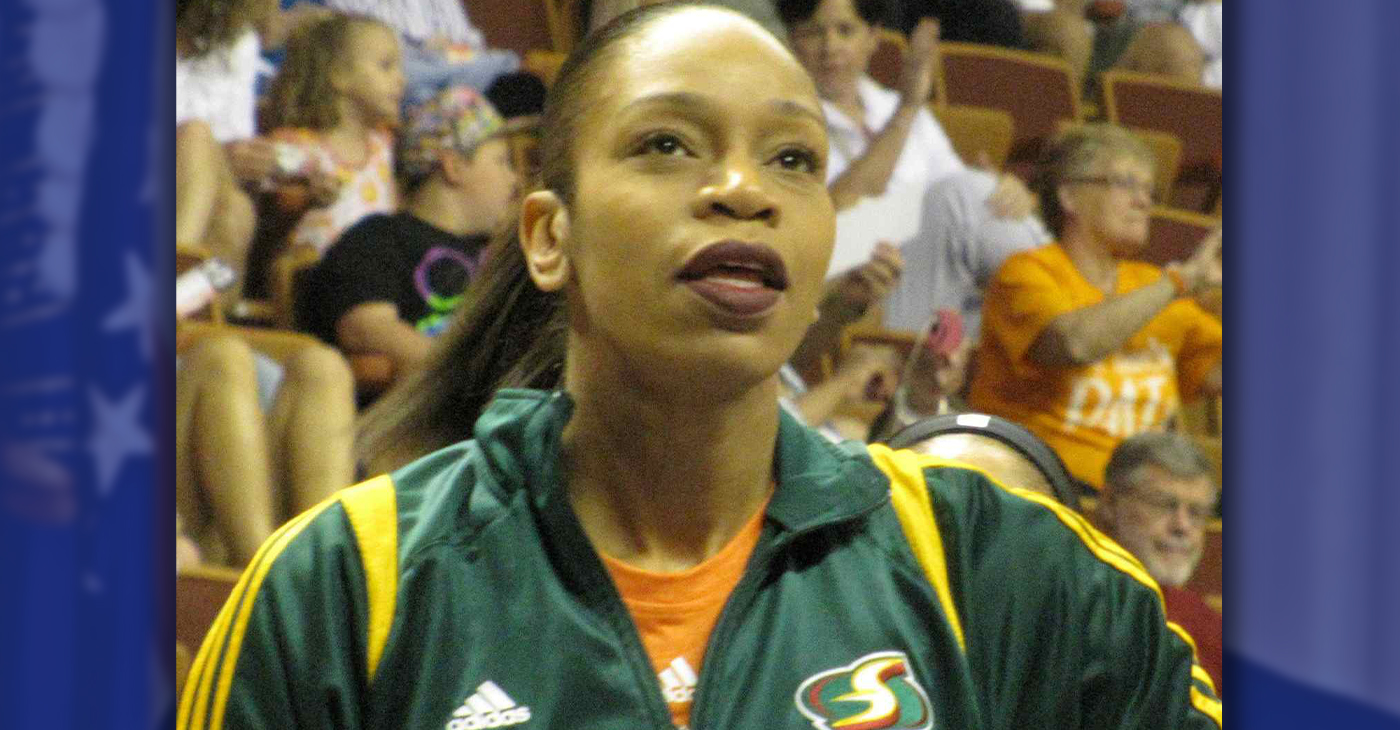
By Tamara Shiloh
The establishment of the Women’s National Basketball Association (WNBA) in 1996 was a turning point for women’s sports, creating a professional platform for female basketball players to showcase their skills at the highest level. Among the trailblazers who helped launch the league, Tina Thompson stands out as the first African American woman drafted into the WNBA.
Tina Thompson was born on February 10, 1975, in Los Angeles, California. Raised in a basketball-loving household, she quickly developed a passion for the game. Thompson improved her skills on the playgrounds of South Central Los Angeles, often playing against boys, which toughened her game and fueled her competitive edge.
She attended the University of Southern California (USC), where she became a standout player for the Trojans. Known for her versatility, scoring ability, and relentless work ethic, she earned All-Pac-10 honors multiple times and cemented her reputation as one of the top collegiate players in the nation.
When the WNBA held its first-ever draft on April 28, 1997, Tina Thompson made history as the league’s first African American player to be drafted. Selected as the first overall pick by the Houston Comets, she joined a team that would go on to dominate the early years of the WNBA.
Tina’s selection was a historic moment, symbolizing the league’s commitment to showcasing diverse talent. As a Black woman in a pioneering role, Thompson carried the hopes of aspiring African American female athletes who dreamed of playing professional basketball.
Tina wasted no time making an impact in the WNBA. As a key member of the Houston Comets alongside legends Cynthia Cooper and Sheryl Swoopes, she helped lead the team to an unprecedented four consecutive championships from 1997 to 2000. The Comets’ dynasty became the gold standard for excellence in the league’s early years.
Known for her signature red lipstick, Thompson displayed confidence and style on the court, becoming an icon both for her gameplay and her individuality. Her ability to score from anywhere on the floor, combined with her defensive prowess, made her one of the league’s most formidable players.
Over a career spanning 17 seasons, Tina established herself as one of the WNBA’s all-time greats. She retired as the league’s leading scorer, a record she held until it was broken by Diana Taurasi. She was a nine-time WNBA All-Star and was named to multiple All-WNBA teams, cementing her status as one of the sport’s legends.
In 2018, Thompson’s contributions to basketball were recognized with her induction into the Naismith Memorial Basketball Hall of Fame. The honor underscored her influence not just as a player, but as a trailblazer for African American women in sports.
After retiring from professional basketball, she transitioned into coaching, using her experience and knowledge to mentor young athletes. She has served as a head coach at the collegiate level, inspiring the next generation of players to pursue excellence both on and off the court.
As a role model and advocate, Thompson has consistently emphasized the importance of education, empowerment, and self-belief. Her story resonates with countless young women who see in her the embodiment of perseverance and success.
Tina Thompson is presently in her third season as an assistant coach at the University of Texas at Austin.
-

 Activism4 weeks ago
Activism4 weeks agoOakland Post Endorses Barbara Lee
-

 Activism4 weeks ago
Activism4 weeks agoOakland Post: Week of March 28 – April 1, 2025
-

 Activism3 weeks ago
Activism3 weeks agoOakland Post: Week of April 2 – 8, 2025
-

 #NNPA BlackPress3 weeks ago
#NNPA BlackPress3 weeks agoTrump Profits, Black America Pays the Price
-

 Activism2 weeks ago
Activism2 weeks agoOakland Post: Week of April 9 – 15, 2025
-

 #NNPA BlackPress3 weeks ago
#NNPA BlackPress3 weeks agoHarriet Tubman Scrubbed; DEI Dismantled
-

 #NNPA BlackPress3 weeks ago
#NNPA BlackPress3 weeks agoLawmakers Greenlight Reparations Study for Descendants of Enslaved Marylanders
-

 #NNPA BlackPress3 weeks ago
#NNPA BlackPress3 weeks agoTrump Targets a Slavery Removal from the National Museum of African-American History and Culture







